Simulation and Experimental Analysis of Multi-Chamber Arc-Quenching Arresters (MCAA) for 10 kV Transmission Lines
Abstract
:1. Introduction
2. Structure and Operation Principle of the Multi-Chamber Arc-Quenching Arrester (MCAA)
2.1. Components of the MCAA
2.2. Arc Energy Destruction Mechanism
3. Simulation of Arc-Quenching Process in the Impulse Phase
3.1. Establishing Mathematical Model of Airflow Coupled Arc
3.2. Geometric Modeling
3.3. Simulation Result Analysis
4. Experimental Verification
4.1. Lightning Volt-Second Characteristic Test
4.2. Frequency Continuity Blocking Test
5. Application Effect
6. Conclusions
- (1)
- The arc energy can be used to generate strong airflow with high speed and high pressure to extinguish the arc. The energy of the impulse arc is transformed into the energy of the compression wave, which helps to extinguish the arc.
- (2)
- The MCAA can completely extinguish the arc within 0.35 ms, which is faster than the action time of relay protection. No re-ignition was found under the action of subsequent industrial frequency voltage.
- (3)
- The MCAA can prevent lightning trip-out effectively and guarantee the reliability of the power supply. The MCAA can significantly reduce the lightning trip rate.
Author Contributions
Funding
Institutional Review Board Statement
Informed Consent Statement
Data Availability Statement
Acknowledgments
Conflicts of Interest
References
- He, J.; Yu, G.; Yuan, J.; Zeng, R.; Zhang, B.; Zou, J.; Guan, Z. Decreasing grounding resistance of substation by deep-ground-well method. IEEE Trans. Power Deliv. 2005, 20, 738–744. [Google Scholar] [CrossRef]
- He, J.; Gao, Y.; Zeng, R.; Sun, W.; Zou, J.; Guan, Z. Optimal Design Analysis of Grounding Grids for Substations Built in Nonuniform Soil. In Proceedings of the International Conference on Power System Technology, Perth, WA, USA, 4–7 December 2000; Volume 3, pp. 1455–1460. [Google Scholar]
- Zeng, R.; Zhuang, C.; Niu, B.; Yu, Z.; He, J. Measurement of transient electric fields in air gap discharge with an integrated electro-optic sensor. IEEE Trans. Plasma Sci. 2013, 41, 955–960. [Google Scholar] [CrossRef]
- Podporkin, G.V.; Enkin, E.Y.; Kalakutsky, E.S.; Pilshikov, V.E.; Sivaev, A.D. Overhead Lines Lightning Protection by Multi-Chamber Arresters and Insulator-Arresters. IEEE Trans. Power Deliv. 2010, 26, 214–221. [Google Scholar] [CrossRef]
- Xia, Q. Research on Real-Time Risk Assessment of Transmission Line Lightning Strike and Trip Warning Model. South China University of Technology, Guangzhou, China. 2019. Available online: https://kns.cnki.net/KCMS/detail/detail.aspx?dbname=CMFD201701&filename=1016191760.nh (accessed on 7 June 2021).
- Li, X. Research on the Technical Principles and Application Schemes of Zinc Oxide Arresters for High-Voltage Transmission Lines. North China Electric Power University. 2001. Available online: https://kns.cnki.net/KCMS/detail/detail.aspx?dbname=CMFD201902&filename=1019177935.nh (accessed on 7 June 2021).
- Li, R.; Wu, G.; Cao, X.; Fan, C.; Wang, Y.; Liu, P. Three-dimensional calculation method of lightning shielding failure rate of transmission lines. Trans. Chin. Soc. Electr. Eng. 2009, 24, 134–138. [Google Scholar] [CrossRef]
- Banjanin, M. Line arresters and underbuilt wire application in lightning protection of 110 kV and 220 kV overhead transmission lines. In Proceedings of the 2019 18th International Symposium INFOTEH-JAHORINA (INFOTEH 2019), East Sarajevo, Bosnia and Herzegovina, 20–22 March 2019; pp. 1–5. [Google Scholar] [CrossRef]
- Wang, J.; Liu, J.; Guo, W.; Wu, G.; Liu, Q. Detonation airflow arc extinguishing method of insulator series-parallel protection gap. Power Syst. Technol. 2014, 38, 1358–1365. [Google Scholar] [CrossRef]
- Wu, D.; Wang, J. Lightning Protection of 10-kV Distribution Lines by Multiple Breakpoints Arc-Extinguishing Lightning Protection Gap. IEEE Trans. Plasma Sci. 2020, 48, 531–536. [Google Scholar] [CrossRef]
- Okabe, S.; Tsuboi, T.; Takami, J. Analysis of aspects of lightning strokes to large-sized transmission lines. IEEE Trans. Dielectr. Electr. Insul. 2011, 18, 182–191. [Google Scholar] [CrossRef]
- Chen, W.; Gu, S.; He, J.; Yin, B. Development of Arc-Guided Protection Devices Against Lightning Breakage of Covered Conductors on Distribution Lines. IEEE Trans. Power Deliv. 2009, 25, 196–205. [Google Scholar] [CrossRef]
- He, J.; Zhang, X.; Dong, L.; Zeng, R.; Liu, Z. Fractal model of lightning channel for simulating lightning strikes to transmission lines. Sci. China Ser. E Technol. Sci. 2009, 52, 3135–3141. [Google Scholar] [CrossRef]
- Taniguchi, S.; Tsuboi, T.; Okabe, S.; Nagaraki, Y.; Takami, J.; Ota, H. Improved method of calculating lightning stroke rate to large-sized transmission lines based on electric geometry model. IEEE Trans. Dielectr. Electr. Insul. 2010, 17, 53–62. [Google Scholar] [CrossRef]
- Yan, Y.; Wang, Y.; Ni, X.; Hu, X. Analysis and Research on the Operation of Lightning Arresters for Composite Insulated Lines. Electr. Porcelain Lightning Arrester 2019, 123–128. [Google Scholar] [CrossRef]
- Li, F.; Shi, W. Insulation coordination of line arresters. High Volt. Technol. 2005, 8, 18–20, 23. [Google Scholar] [CrossRef]
- Giraudet, F. Various Benefits for Line Surge Arrester Application and Advantages of Externally Gapped Line Arresters. In Proceedings of the 2019 International Conference on High Voltage Engineering and Technology (ICHVET), Begumpet, India, 7–8 February 2019; pp. 1–6. [Google Scholar] [CrossRef]
- Li, J.; Shao, Q.; Zhou, M.; Zhao, Z.; Guo, J. Analysis of lightning discharge current and absorbed energy characteristics of lightning arresters in distribution network. Electr. Porcelain Arresters 2019, 131–135. [Google Scholar] [CrossRef]
- Liao, M.; Cai, H.; Wu, X.; Jia, L. Research on the impact of multiple lightning strikes on line arresters. Electr. Porcelain Arresters 2019, 153–158. [Google Scholar] [CrossRef]
- Yang, H.; Wang, C.; Yang, J.; Shi, F. Analysis of a 110 kV line lightning arrester explosion accident. Electr. Porcelain Arrester 2019, 4, 151–154, 160. [Google Scholar] [CrossRef]


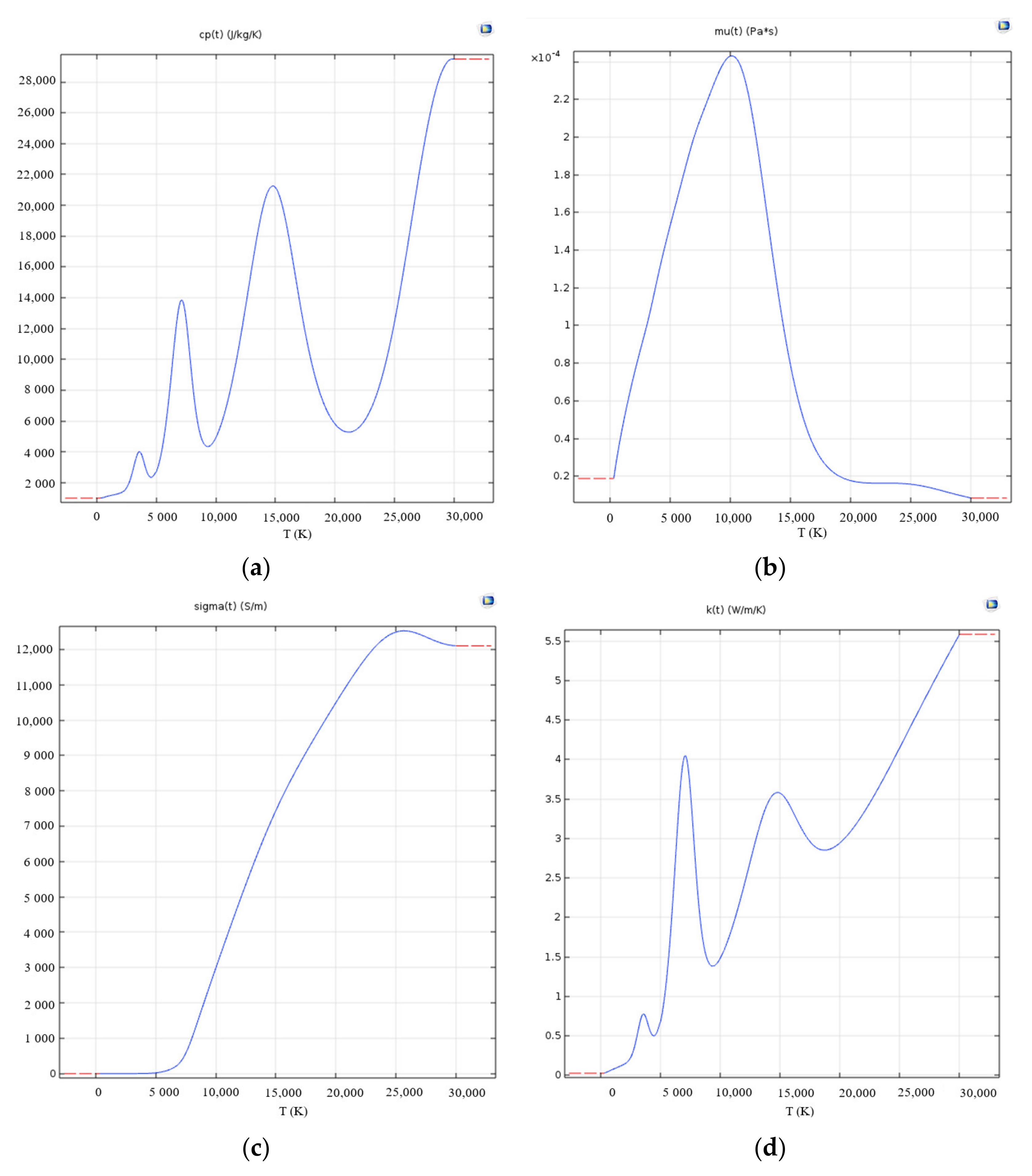



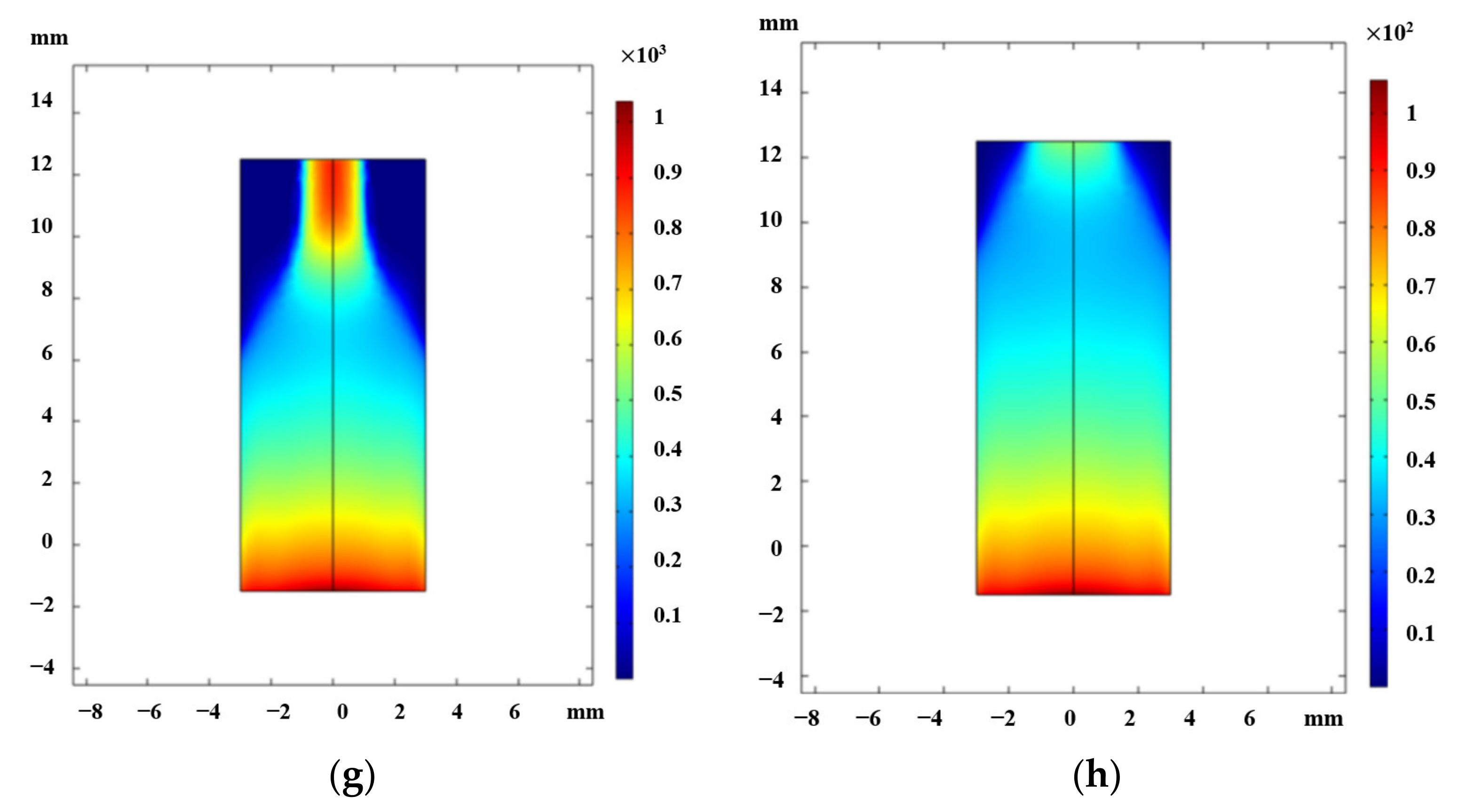



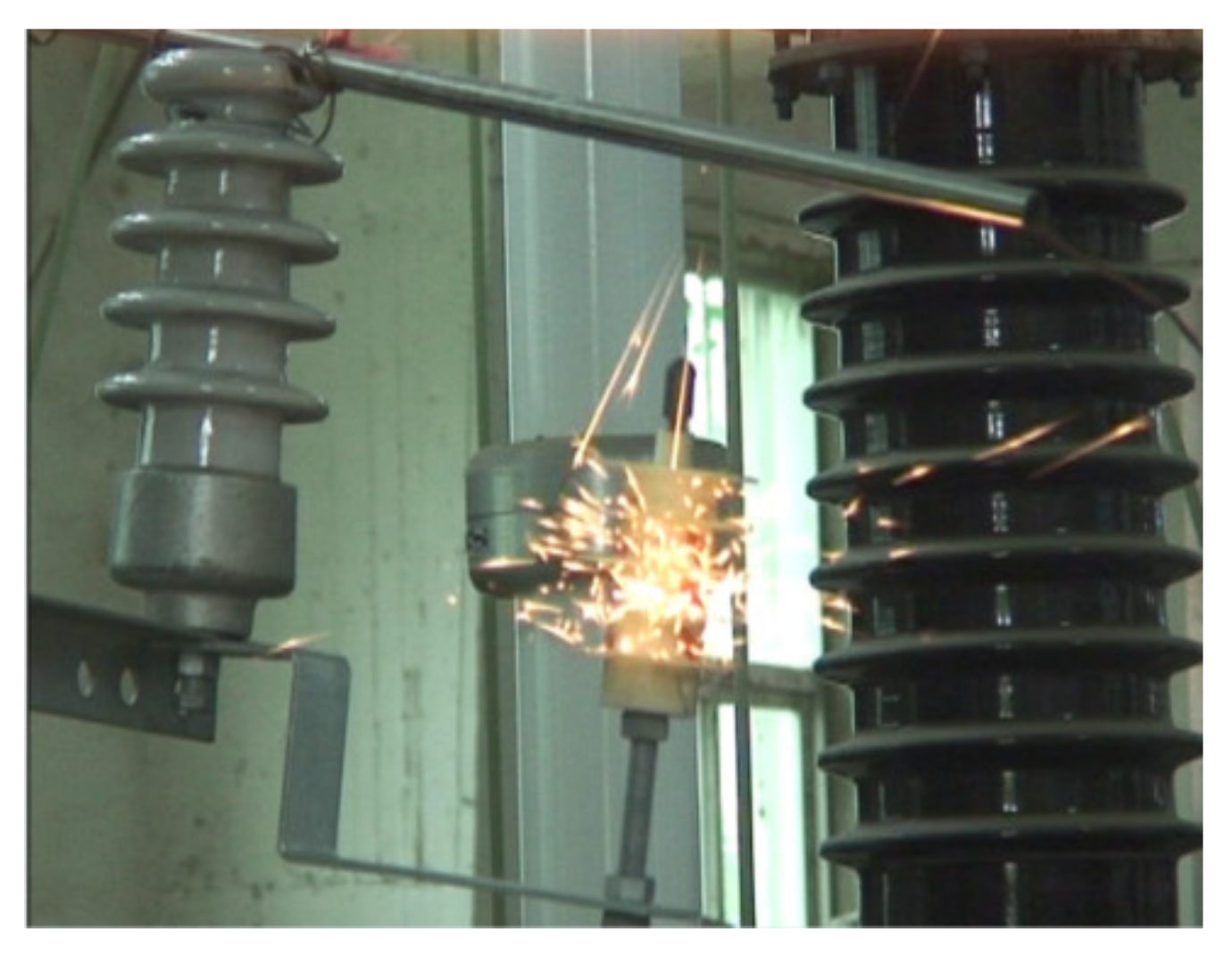


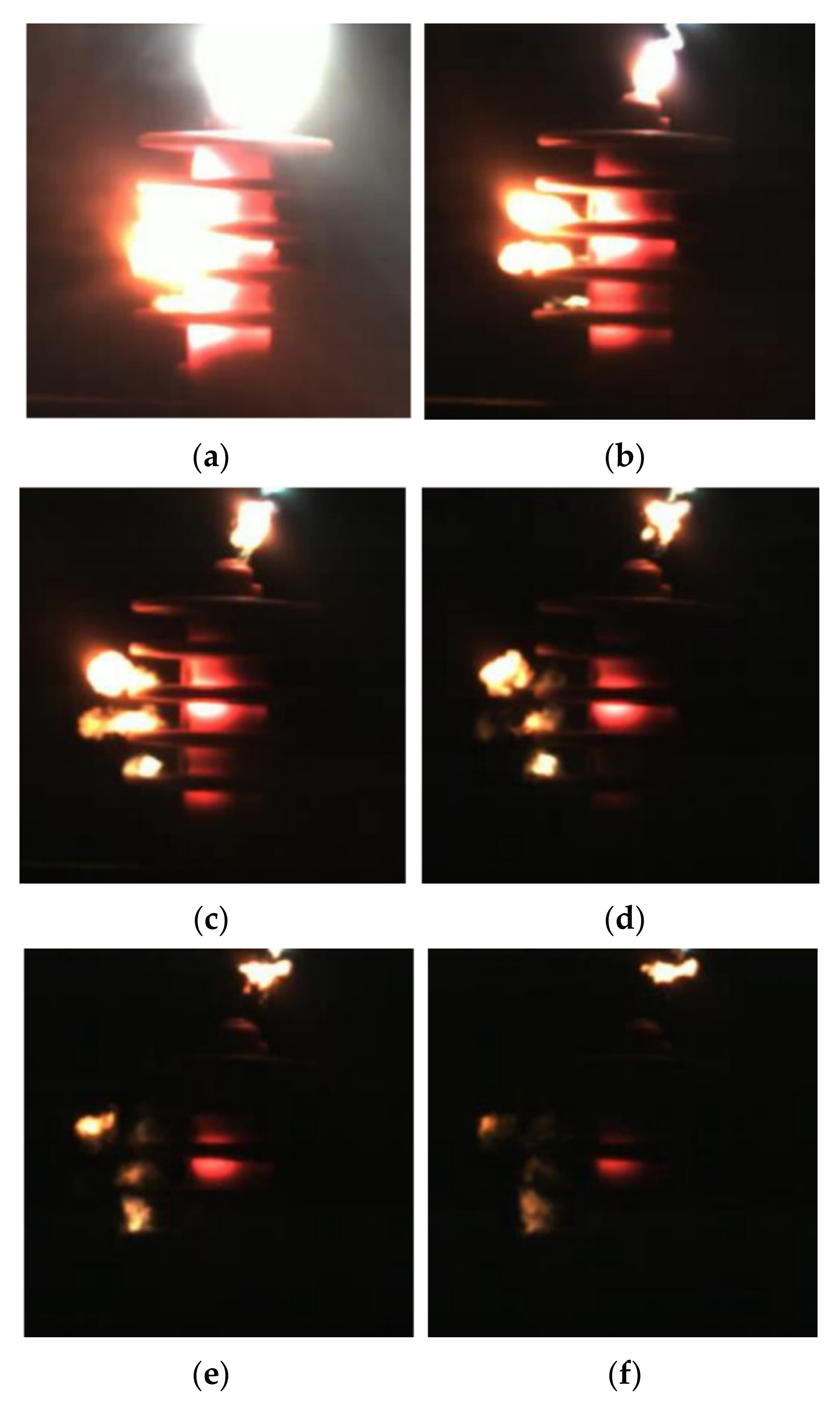
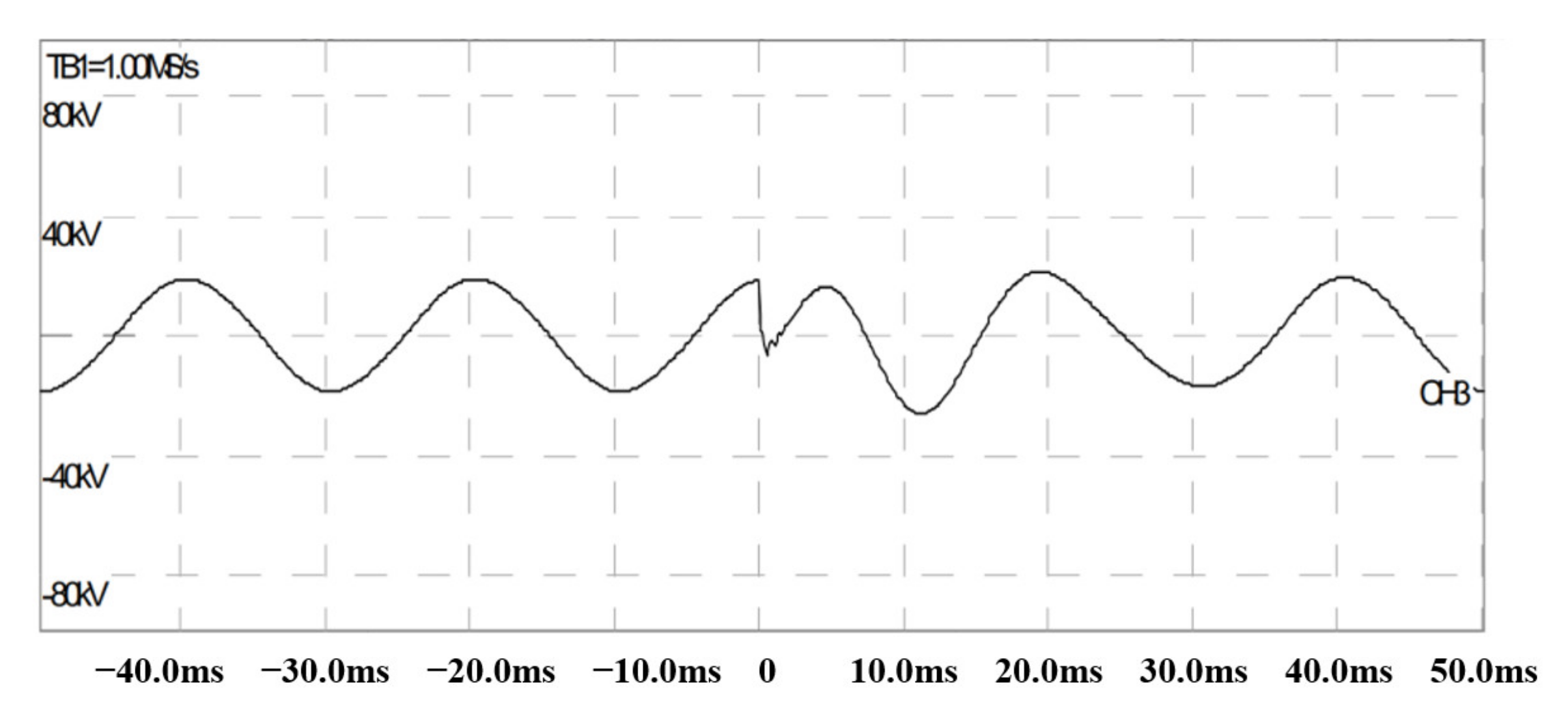

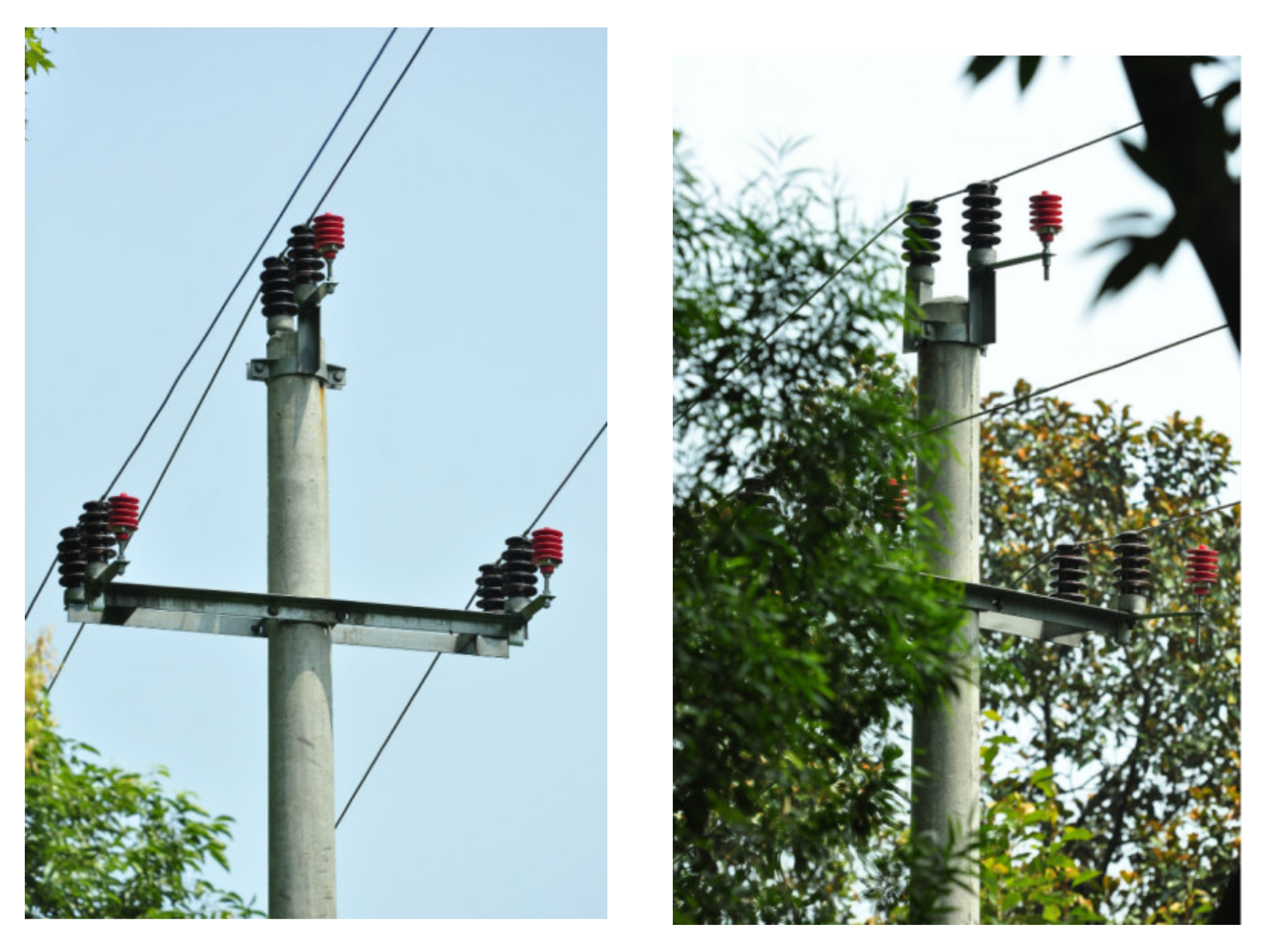
| Span (km) | Insulator | Conductor Height (m) | Ground Flash Density (Times/km2⋅a) |
|---|---|---|---|
| 10 | PS-20 | 12 | 0.12 |
| U50% (kV) | Inductance (μH) | Thunderstorm Day (d) | Grounding resistance (Ω) |
| 206 | 5.52 | 80 | 20 |
| Year | Lightning Stroke Time | Operation Time | Trip-Out Time | Lightning Outage Rate |
|---|---|---|---|---|
| 2019 | 15 | 0 | 15 | 20.8 |
| 2020 | 10 | 9 | 1 | 3.38 |
Publisher’s Note: MDPI stays neutral with regard to jurisdictional claims in published maps and institutional affiliations. |
© 2021 by the authors. Licensee MDPI, Basel, Switzerland. This article is an open access article distributed under the terms and conditions of the Creative Commons Attribution (CC BY) license (https://creativecommons.org/licenses/by/4.0/).
Share and Cite
Wu, D.; Ji, Z.; Wang, J. Simulation and Experimental Analysis of Multi-Chamber Arc-Quenching Arresters (MCAA) for 10 kV Transmission Lines. Energies 2021, 14, 6185. https://doi.org/10.3390/en14196185
Wu D, Ji Z, Wang J. Simulation and Experimental Analysis of Multi-Chamber Arc-Quenching Arresters (MCAA) for 10 kV Transmission Lines. Energies. 2021; 14(19):6185. https://doi.org/10.3390/en14196185
Chicago/Turabian StyleWu, Dong, Zelin Ji, and Jufeng Wang. 2021. "Simulation and Experimental Analysis of Multi-Chamber Arc-Quenching Arresters (MCAA) for 10 kV Transmission Lines" Energies 14, no. 19: 6185. https://doi.org/10.3390/en14196185
APA StyleWu, D., Ji, Z., & Wang, J. (2021). Simulation and Experimental Analysis of Multi-Chamber Arc-Quenching Arresters (MCAA) for 10 kV Transmission Lines. Energies, 14(19), 6185. https://doi.org/10.3390/en14196185





